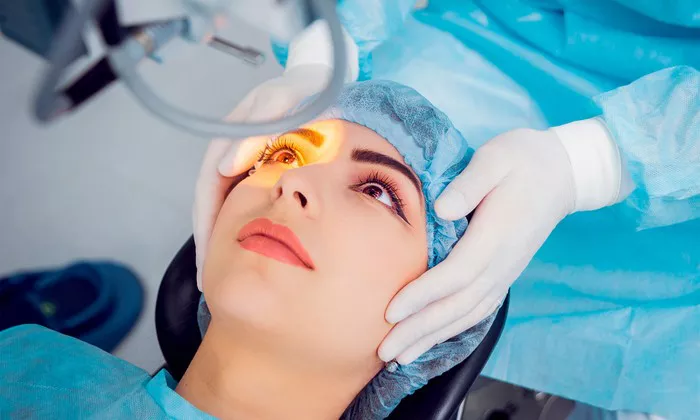Erin Orchard, a 36-year-old woman from Sydney, Australia, has been left in persistent extreme pain, requiring £25,000 in follow-up treatments after a laser eye surgery procedure went awry in 2019. Seeking the surgery to eliminate the need for glasses on her wedding day, Erin has since been plagued by neuropathic corneal pain, a little-understood reaction to the surgery.
Describing her daily pain as akin to “glass stabbing into my eyes,” Erin urges caution to others contemplating the procedure. The pain manifests in flare-ups triggered by seemingly innocuous factors such as wind or air conditioning, making day-to-day activities challenging.
Erin endures severe facial spasms during these episodes, mitigated by botox treatments every three months. In the initial two months post-surgery, extreme light sensitivity rendered her unable to work or leave her house. Resorting to blacking out windows with towels and cardboard, she struggled to cope.
While not placing blame on the clinic, Erin believes she should have been more informed about potential risks. Her regret extends beyond the physical pain, as she had to utilize all her savings, AU$20k (£10,000), earmarked for a home purchase with her husband, Liam Orchard, to fund her treatments.
Erin’s treatments include regular ketamine infusions, anti-inflammatories, and eye drops made from her blood and saline. The financial burden has reached AU$50k, depleting their savings intended for a shared life together. Erin expresses disappointment that their plans for property ownership and starting a family have been put on hold due to the unforeseen consequences of the surgery.
The prevalence of corneal neuralgia after laser eye surgery remains uncertain, with estimates varying. Dr. Anat Galor, a professor at the University of Miami, suggests that less than 1,000 people in the U.S. experience it each year, though Erin cites varying statistics, with the most common figure she has encountered being one in three.


